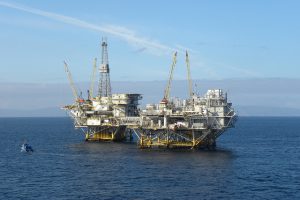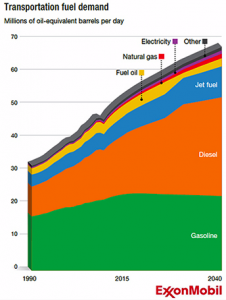5 item(s) were returned.
MPP Candidate
George Washington University
In January, the Bureau of Ocean Energy Management (BOEM) released its “America-First Offshore Energy Strategy,” as part of the 2019-2024 National OCS Oil and Gas Leasing Draft Proposal Program (DPP). While the Obama Administration’s 2017-2022 program opened up only 6% of total outer continental shelf (OCS) acreage to resource exploration and development, the 2019-2024 Program proposes to open up approximately 90%. The BOEM estimates the U.S. OCS has about 90 billion barrels of undiscovered oil and 327 trillion cubic feet of undiscovered, natural gas. If implemented, the 2019-2024 DPP would dramatically expand America’s capacity for offshore oil and gas drilling,… [more]
View InsightPresident
The Stella Group, LTD
Over 20 states are reviewing their net-metering rules for solar energy and at least 10 are conducting value of distributed generation studies. But is this just delaying the inevitable — that states must embrace policies that promote energy conservation technologies rather than sustain their traditional grids? And are solar energy systems the only culprit? In fact, energy conservation technologies have already significantly impacted baseload demand patterns. According to the Department of Energy (DOE), light-emitting diode (LED) installations increased in all applications between 2012 and 2014, more than quadrupling to 215 million units overall. Energy Star notes “In 2014…American families and… [more]
View InsightMany are familiar with peak oil theory — the idea that global oil production will hit a ceiling and then decline — yet the concept of peak oil demand, where demand will plateau before supply, appears to be replacing this controversial hypothesis. Amy Myers Jaffe, Executive Director of Energy and Sustainability at UC Davis, recently wrote in the Wall Street Journal that a combination of technical, economic, environmental and demographic shifts could lead to peak global oil demand in the next two decades. By contrast, the Energy Information Administration (EIA) projects that global oil demand will rise from 87 million barrels per… [more]
View InsightA bill, recently introduced by Illinois State Representatives John Bradley and David Reis, to regulate hydraulic fracturing in the state is attracting support from both industry and environmental groups. The bill, House Bill 2615, introduced on February 21st, 2013, would impose new requirements on the oil and gas industry, such as: Public disclosure of all fracking chemicals before fracking begins Presumed liability of the oil and gas drillers for any environmental contamination near fracking sites, until proven otherwise Restrictions on venting and flaring of natural gas The bill’s supporters believe that it outlines an effective compromise that could open up… [more]
View InsightAdvisor
Fuel Freedom Foundation
The recent projections for future energy consumption from Exxon Mobil’s report, “Outlook for Energy,” and the EIA’s “Annual Energy Outlook, 2013” essentially said the same thing concerning the potential for natural gas and its derivative methanol: Natural gas use now is only about 1 percent of the total fuel used in vehicles, and by 2040, it will only rise to 4 percent. This increase will take place in the trucking sector and liquefied natural gas (LNG). Owners of automobiles will not rush to natural gas, because of a lack of pumping stations and the low density of natural gas. Adam… [more]
View Insight



